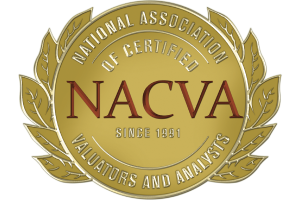Family Businesses: The Added Complexities

Key Takeaways
- Formalize Decision-Making: Ensure clarity, fairness, and consistency through structured processes.
- Prioritize Succession Planning: Guarantee business continuity and prevent disputes with proactive planning.
- Implement Robust Risk Management: Safeguard the business against unforeseen challenges and ensure long-term stability.
- Separate Ownership from Management: Maintain professionalism and operational efficiency by delineating these roles.
Family businesses are the bedrock of economies. They weave together the strength of familial bonds with the drive of entrepreneurial spirit.
Yet, these enterprises confront unique hurdles that complicate governance and endanger longevity. Recognizing and addressing these complexities becomes paramount for sustaining a thriving family legacy.

I am a lawyer, a certified valuation analyst, and a certified exit and succession planner. I have worked with closely held business owners throughout my career. Contact me with questions about valuing your business, developing an exit plan, or the legal bulletproofing necessary to protect your investment.
The Intricacies of Family Dynamics in Business
n a family business, the personal relationships intertwine with professional roles. This creates a complex web of interactions. While familial bonds can foster trust and commitment, they can also lead to conflicts when personal issues spill over into the business realm. Sibling rivalries, generational differences, or even unresolved childhood grievances can influence decision-making, potentially hindering the company’s progress.
Consider the Murdoch family’s media empire. The ongoing Internal disputes have led to significant challenges in governance and succession planning.
The late patriarch, Rupert Murdoch, navigated a complex landscape of competing interests among his children. This dynamic played out in public, affecting the strategic direction of News Corporation.
The constant interplay between personal relationships and business decisions created an environment where operational efficiency was often secondary to familial politics.
The result: public scrutiny and internal strife. The Murdoch family’s experience underscores a fundamental truth: unresolved family dynamics can derail even the most powerful enterprises.
Separating Ownership from Management
An effective strategy to mitigate conflicts involves separating ownership from management. Family members may hold ownership stakes, but this does not necessitate involvement in daily operations.
Appointing qualified professionals to manage the business ensures decisions are made based on merit and business acumen rather than familial ties. Some of those professionals, perhaps most, will be family members, others not,
The Wallenberg family of Sweden exemplifies this approach. They have maintained control over extensive business interests by running their enterprises through foundations rather than direct family ownership.
This structure minimizes internal conflicts and ensures professional management. The family’s influence is exerted through strategic oversight, not day-to-day operations. The Wallenberg Foundations own significant stakes in major Swedish companies, including Ericsson and AstraZeneca.
This model demonstrates how families can retain control while ensuring operational efficiency and minimizing internal strife. The separation of ownership and management is not merely a theoretical concept; it is a practical necessity for long-term success.
Formalizing Decision-Making Processes
The Informal decision-making common in many family businesses can lead to misunderstandings and perceptions of favoritism. Establishing formal processes ensures transparency and fairness. Key steps include:
- Developing a Family Constitution: This document outlines the family’s values, vision, and guidelines for involvement in the business. It serves as a foundational document, setting clear expectations and reducing ambiguity.
- Creating Governance Structures: Implementing boards or advisory councils that include non-family members provides objective perspectives and enhances credibility. These structures introduce external expertise and impartiality into the decision-making process.
- Establishing Clear Policies: Defining criteria for employment, compensation, and conflict resolution helps manage expectations and reduce potential disputes. Clear policies prevent subjective judgments and ensure consistent treatment of all stakeholders.
The Foy family, owners of Foy’s SuperValu in Cootehill, Ireland, created a family constitution to facilitate a smooth transition between generations. This document outlined the family’s shared values and established guidelines for future involvement in the business.
The process of creating the constitution involved extensive discussions and negotiations, ensuring all family members had a voice. The result was a clear framework for decision-making, reducing the potential for conflicts and ensuring the continuity of the business. The Foy family’s experience illustrates the practical benefits of formalizing decision-making processes.
The Imperative of Succession Planning
Succession planning is often a sensitive topic, but it is crucial for the sustainability of a family business. Without a clear plan, businesses risk leadership vacuums, internal conflicts, and potential failure. Effective succession planning involves:
- Identifying Potential Successors: Assessing family members’ skills, interests, and commitment to determine suitability for leadership roles. This process should be based on objective criteria, not merely familial ties.
- Providing Development Opportunities: Offering education and mentorship to prepare successors for future responsibilities. This ensures successors are equipped with the necessary skills and knowledge to lead the business.
- Communicating the Plan: Ensuring all stakeholders understand the succession strategy to prevent misunderstandings and build confidence in the process. Clear communication fosters trust and reduces uncertainty.
The Jasper Hill winery in Australia faced succession challenges as the next generation initially hesitated to take over due to industry difficulties. The founders, Ron and Elva Laughton, had built a reputation for producing high-quality Shiraz, but the wine industry faced economic downturns.
The Laughton’s children, while passionate about the family business, were initially reluctant to assume leadership roles. However, through open communication and careful planning, the family developed a succession strategy that addressed the concerns of the next generation.
This involved diversifying the business and implementing sustainable practices. The result was a smooth transition and the continued success of the winery. The Jasper Hill example demonstrates the importance of proactive succession planning..
Implementing Risk Management Strategies
To safeguard the business against unforeseen challenges, implementing risk management strategies is essential. This includes:
- Diversifying Investments: Reducing reliance on a single revenue stream to mitigate financial risks. Diversification ensures the business is resilient to market fluctuations and economic downturns.
- Establishing Emergency Protocols: Preparing for potential crises, such as economic downturns or health emergencies, to ensure business continuity. Emergency protocols provide a framework for responding to unexpected events.
- Regularly Reviewing Policies: Continuously assessing and updating governance and operational policies to adapt to changing circumstances. Regular reviews ensure policies remain relevant and effective.
Conclusion
Family businesses face unique complexities that require deliberate strategies to navigate successfully. Separating ownership from management, formalizing decision-making processes, and implementing robust succession and risk management plans are essential for overcoming inherent challenges and thriving across generations.
These strategies transform potential vulnerabilities into sources of strength.
Actions to To Protect Your Family Business
Protect your family business by proactively addressing its unique challenges:
- Assess Your Governance Structure: Evaluate whether your current structure effectively separates ownership from management and supports objective decision-making. Does your structure promote professionalism and minimize conflicts?
- Develop Formal Policies: Create clear guidelines for roles, responsibilities, and processes to ensure transparency and fairness. Are your policies clearly documented and consistently applied?
- Initiate Succession Planning: Start conversations about the future leadership of the business, and develop a plan that includes identifying and preparing potential successors. Have you identified and prepared potential successors?
- Implement Risk Management Measures: Establish strategies to identify, assess, and mitigate potential risks to safeguard your business’s future. Are your risk management strategies comprehensive and regularly updated?
By taking these steps, you can strengthen your family’s enterprise, ensuring its success and legacy for generations to come. For expert guidance on succession planning, visit www.closelyheldadvisor.com. You can also learn more about business valuation services at www.weinerlaw.com.
For a comprehensive guide to risk management in family businesses, see Family Business Risk Management: Protecting Your Legacy
For additional insights on governance in closely held businesses, see “Shareholder Disputes in Closely Held New York Corporations: Common Causes and Legal Remedies” on The Business Divorce Lawyer.






